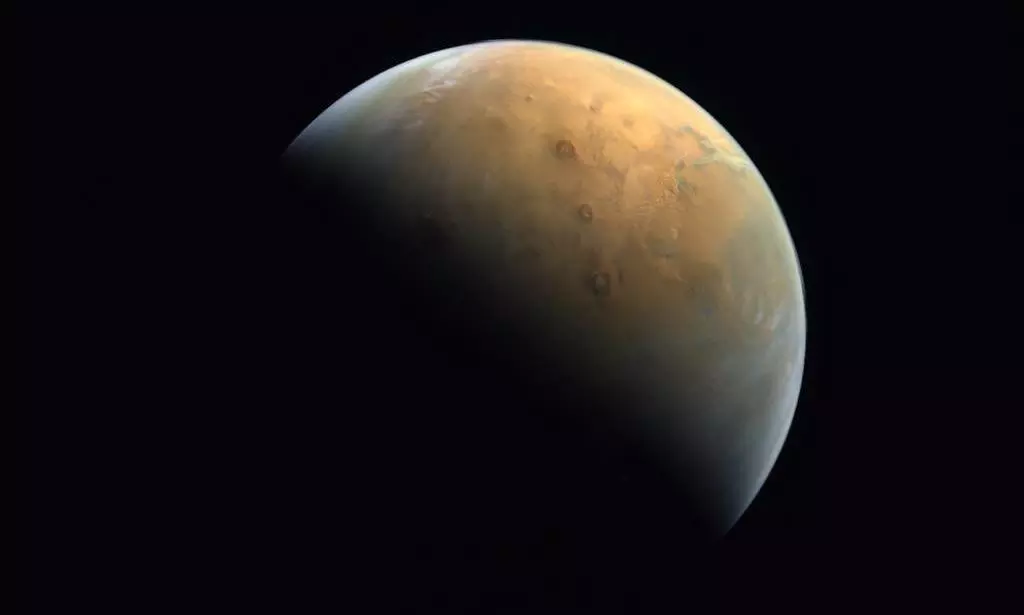
UAE receives first image of Mars from Hope Probe
text_fieldsThe Hope Probe, which successfully entered the Mars Orbit last Tuesday (Feb 9), has sent its first photographs of the red planet, the national space agency informed in a statement on Sunday. This marks the beginning of the new phase of amassing 1,000 gigabytes of Mars data, aimed at a quantum leap in global space science.
The image was captured at about 25,000 kilometres (15,500 miles) above Mars' surface. The image shows the tallest volcano on Mars and the solar system itself, Olympus Mons, and other three volcanoes near the Martian equator: Pavonis Mons, Ascraeus Mons and Arsia Mons, collectively known as Tharsis Montes.
The Hope rover succeeded in taking the first image of Mars via the Emirates eXploration Imager (EXI), a digital camera specialized in capturing high-resolution colour images of Mars, Emirates Mars Infrared Spectrometer (EMIRS), a device developed to capture the integrated atmospheric dynamics of Mars, and the Emirates Mars Ultraviolet Spectrometer (EMUS), which measures oxygen and carbon monoxide in the thermal layer of Mars, hydrogen and oxygen in the Martian outer shell.
The Hope Probe will now collect more than 1,000 gigabytes of new data on Mars which will be circulated from September to understand the evolution of climate and planets within our solar system.
The UAE became the fifth country globally, and the first Arab country to reach Mars last week. The rover has completed its fourth major phase with entry into Mars orbit since its launch on July 20, 2020, from the Tanegashima Space Center in Japan. The four completed stages are launch stage, early operational phase, space navigation phase and entry into orbit, with two more phases remaining.
The probe is preparing for the next phase of the mission; the transition to scientific orbit. After completing all these processes, the final and scientific phase is scheduled to begin next April. It will begin its exploration mission to monitor and analyze the Red Planet's climate in the last phase. It is expected to provide the firs-ever complete picture of the Martian climate and weather conditions on its surface throughout days and seasons of a whole year.
The probe will continue its mission for a full Martian year (687 earth days), extending through April 2023 and may extend to another Martian year, if necessary.

















